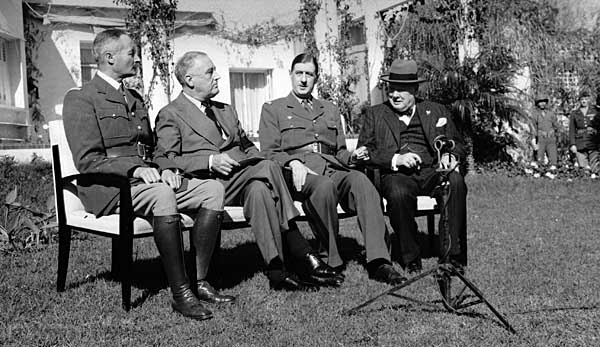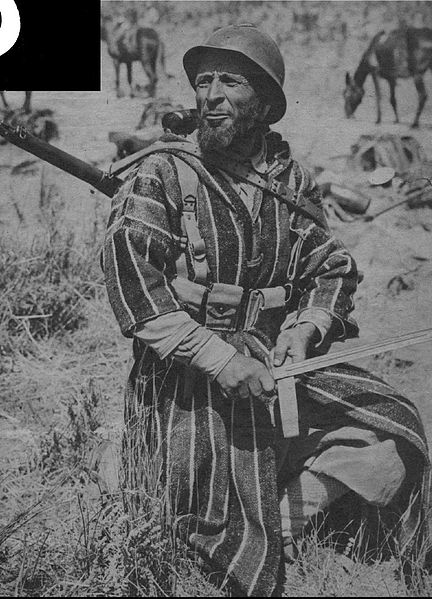Updated
Morocco: Backdrop of American Military Strategy in World War II

Allied leaders (from left) French General Henri Giraud, U.S. President Franklin D. Roosevelt, French General Charles de Gaulle, and British Prime Minister Winston Churchill at the Casablanca Conference, January 1943. Credit: U.S. Army Photo
MAC (Washington, DC, June 6, 2013) — Sixty-nine years ago today, on June 6, 1944, British and American troops landed on the beaches of Normandy in the historic D-Day invasion, recognized as a turning point for Allied forces in Europe in World War II. But American forces began planning—and winning—the war years earlier; and not in Europe or in Japan, but in North Africa.
After Pearl Harbor, at the Arcadia conference in Washington, DC in December 1941, US President Franklin Roosevelt and Prime Minister Winston Churchill met and produced two plans: one, code-named “Sledgehammer,” for the build-up of forces in Great Britain in case it was necessary to invade France; and a second, code-named “Super-Gymnast,” that would coordinate Allied landings in Libya and on the Atlantic coast of Morocco.
As a French protectorate, Morocco had sided with France against Germany at the outbreak of the war in 1939, and many Moroccans served with distinction for France and the Allied forces. But:
The collapse of the French in 1940 followed by the installation of the Vichy regime produced an entirely new situation. The Sultan signified his independence by refusing to approve anti-Jewish legislation. When Anglo-American troop landings took place in 1942, he refused to comply with the suggestion of the French resident general, Auguste Noguès, that he retire to the interior.
The American military worked in clandestine to prepare Morocco for the landing. “The geographical situation at the westernmost end of North Africa encouraged and facilitated clandestine activities. The results were impressive: some 60,000 men, including short-term volunteers, civilian workers, laborers, auxiliary police, and goumiers (or Moroccan riflemen), were secretly maintained in various mountain areas.”
In November 1942 under “Operation Torch,” US and British forces under Dwight D. Eisenhower landed in Algeria and Morocco, then moved east into Tunisia.
From January 12-23, 1943, Roosevelt and Churchill, along with their respective military chiefs and aides, met in Casablanca, Morocco for the “Casablanca Conference,” where they planned military strategy for the western Allies. It is in that meeting that they decided on “the invasion of Sicily rather than an immediate invasion of western Europe and… the concentrated bombing of Germany.” Roosevelt and Churchill also agreed to demand an “unconditional surrender” from Germany, Italy, and Japan.
In May 1943 the Allies, advancing from east and west, defeated the Axis forces in North Africa and forced the surrender of 250,000 Axis troops.

Originally pictured in Yank magazine with the caption: “A colorful Goum sharpens an American bayonet. His rifle is also American, his helmet, French.”